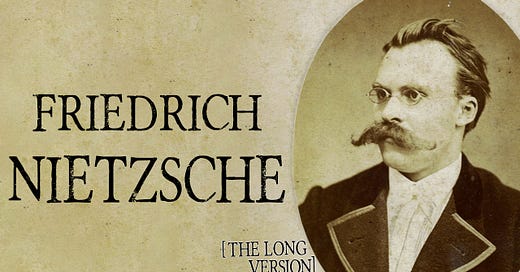Upgrade to paid to play voiceover
Creating an overview of Friedrich Nietzsche presents unique challenges. There are many great articles and videos that are organised chronologically around his life or his works and others that focus on his big ideas. But in this instalment we're going to try something a little different. We are going to search for the thread of Ariadne that will lead us…
Keep reading with a 7-day free trial
Subscribe to The Living Philosophy to keep reading this post and get 7 days of free access to the full post archives.




